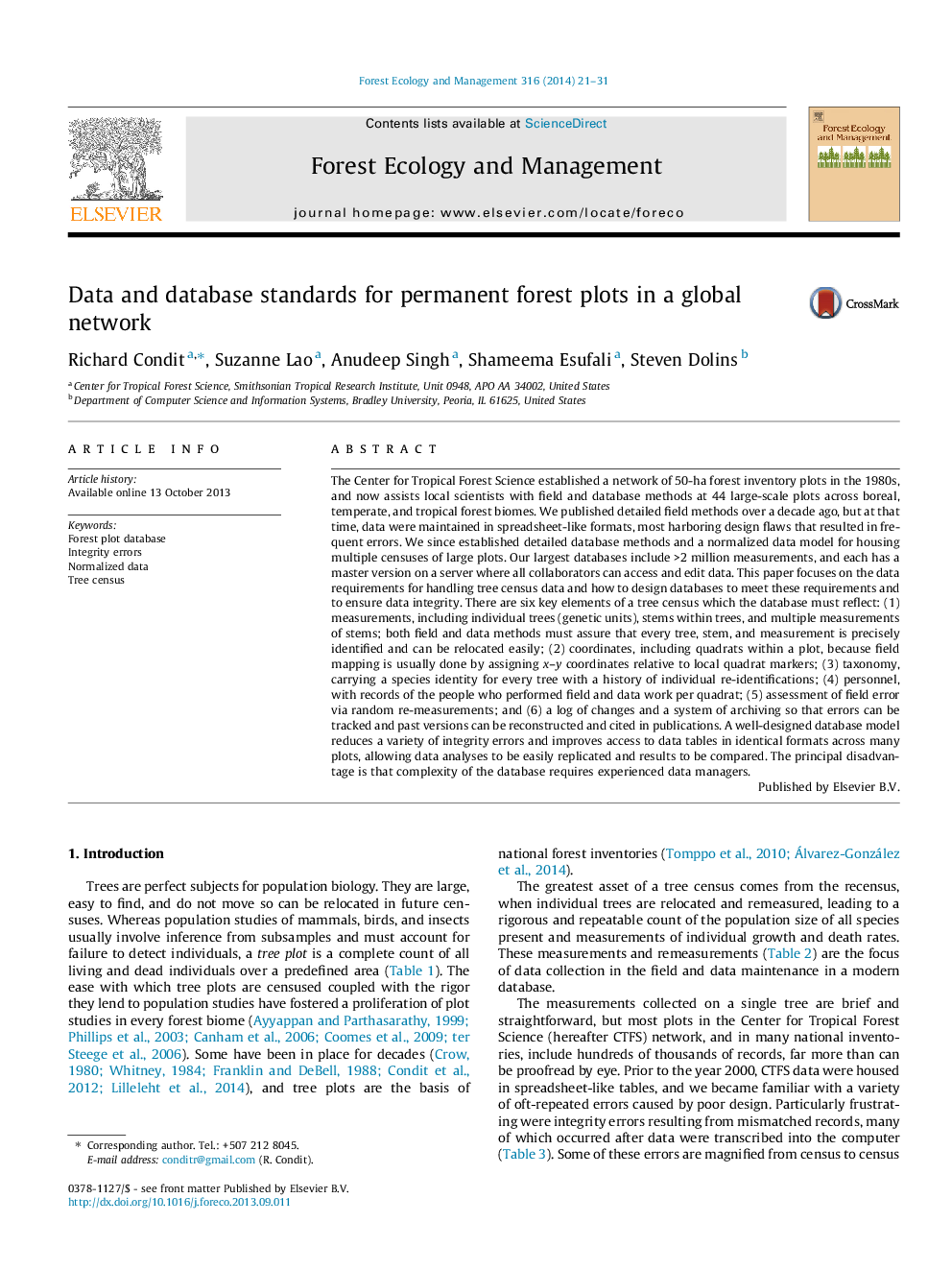| کد مقاله | کد نشریه | سال انتشار | مقاله انگلیسی | نسخه تمام متن |
|---|---|---|---|---|
| 86915 | 159221 | 2014 | 11 صفحه PDF | دانلود رایگان |
• Global networks of forest plots produce millions of records of individual trees.
• Multiple measurements of these trees produce growth estimates over years.
• Theories of data systems provide tools for reducing errors in these databases.
• Relationships among measurements, stems, and trees are key to the data models.
• Normalized tables in a standardized format foster global analyses in the CTFS network.
The Center for Tropical Forest Science established a network of 50-ha forest inventory plots in the 1980s, and now assists local scientists with field and database methods at 44 large-scale plots across boreal, temperate, and tropical forest biomes. We published detailed field methods over a decade ago, but at that time, data were maintained in spreadsheet-like formats, most harboring design flaws that resulted in frequent errors. We since established detailed database methods and a normalized data model for housing multiple censuses of large plots. Our largest databases include >2 million measurements, and each has a master version on a server where all collaborators can access and edit data. This paper focuses on the data requirements for handling tree census data and how to design databases to meet these requirements and to ensure data integrity. There are six key elements of a tree census which the database must reflect: (1) measurements, including individual trees (genetic units), stems within trees, and multiple measurements of stems; both field and data methods must assure that every tree, stem, and measurement is precisely identified and can be relocated easily; (2) coordinates, including quadrats within a plot, because field mapping is usually done by assigning x–y coordinates relative to local quadrat markers; (3) taxonomy, carrying a species identity for every tree with a history of individual re-identifications; (4) personnel, with records of the people who performed field and data work per quadrat; (5) assessment of field error via random re-measurements; and (6) a log of changes and a system of archiving so that errors can be tracked and past versions can be reconstructed and cited in publications. A well-designed database model reduces a variety of integrity errors and improves access to data tables in identical formats across many plots, allowing data analyses to be easily replicated and results to be compared. The principal disadvantage is that complexity of the database requires experienced data managers.
Journal: Forest Ecology and Management - Volume 316, 15 March 2014, Pages 21–31
